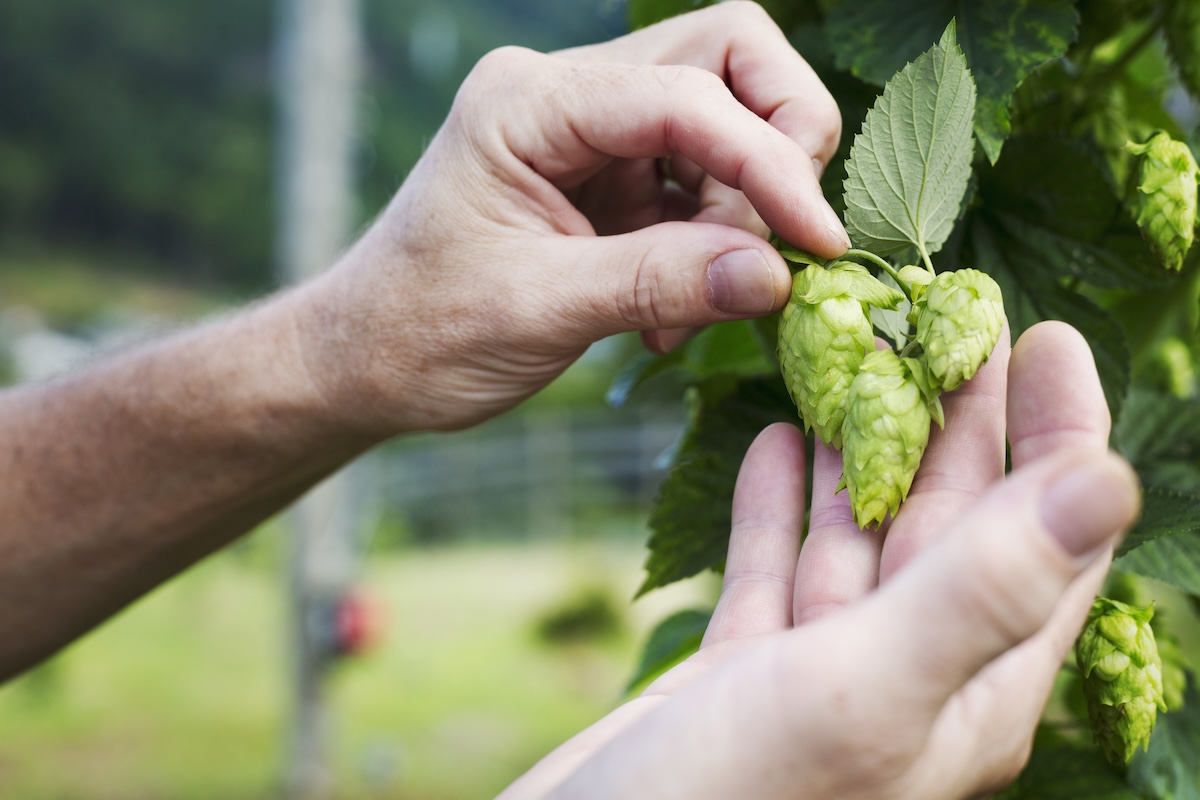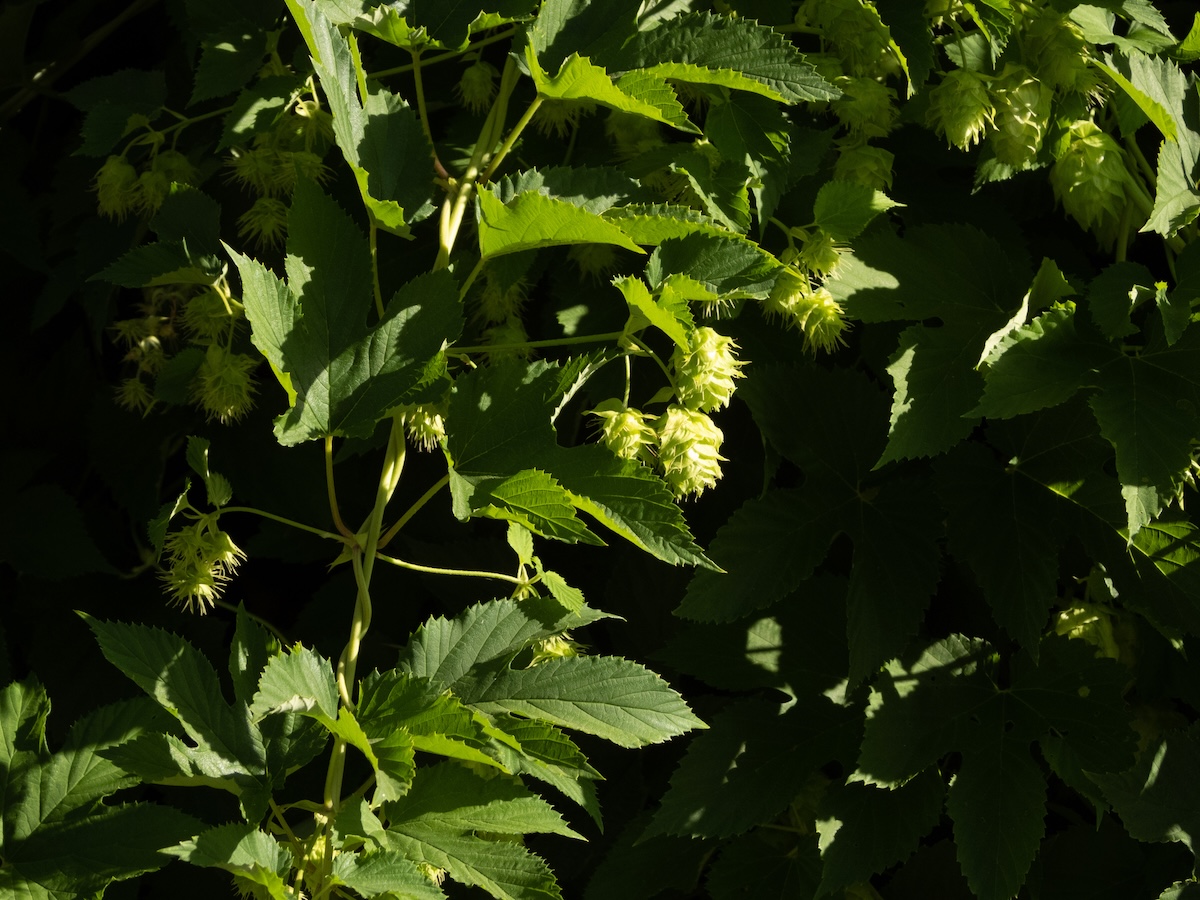

We may earn revenue from the products available on this page and participate in affiliate programs. Learn More ›
Inquiring readers might wonder why a teetotaler would purchase this particular vine from among invasive plants. My excuse is that as a beginning gardener, I was very much into herbs, and hops once served many medical uses in addition to the flavoring of beer.
I also thought the hops (Humulus lupulus) vine would make a charming, fast-growing addition to the arbor in my garden, with a climbing rose on the other side. I should say vines, actually, since there was more than one hops plant in the pot when I received it. Here’s why I wish I had never planted the hops, plus a few other plant choice regrets.
I thought the hops would not produce seeds.
When my uncle stopped by for a visit one day, he expressed interest in seeing the vines I recently had planted because he recalled one growing on our farm when he and my dad were young. He warned me that hops could be an invasive species. I smugly replied that I knew that but had been careful to purchase female plants, which only produce unseeded hops when no male plants are present.
My uncle strolled over to the arbor and inspected one of the strobiles (a cone-like flower). Then he glanced back at me with a pitying sort of expression but didn’t comment.

I maintained early hope.
After my uncle left, I too looked closer and saw seeds. Apparently, a male vine had snuck in somehow. Although I suspected I had made a major gardening mistake, I noticed that the plants behaved fairly well as long as I kept them confined to the arbor, though I’m amazed that the rose on the other side of the arbor survived their invasiveness.
I had learned that part of the hops’ species name (lupulus) means “wolf” in reference to its tendency to squeeze the life out of other nearby plants. But the rose was a tough heirloom itself, (Henry Kelsey) and “he” put up a valiant fight.
The hops vines led to an unsafe arbor.
Eventually, however, all those heavy vines and canes tilted what had never been a well-secured arbor. Since my young nieces and nephews visited frequently, I decided I’d better take the structure down before it fell on their innocent heads. Of course, that left the hops vines no place to go except across the garden. And go they did!
The vines actually don’t produce many hops when they aren’t climbing to their preferred heights. But they do clamber over everything in their path. I ended up having to pull up armfuls of the vines at least once or twice a summer.

Pulling up hops vines is not enough to control them.
Since the plants advance via underground runners, I suspect I just yank shoots off without really affecting what lies beneath. To completely eradicate the vines, I would have to dig up that entire garden, which I have neither the time nor energy to do. Where the vines coil atop other plants they are fairly easy to remove. But, when they twine themselves around perennials, I have to carefully snip them free.
Fortunately, hops vines die back to the ground during winter, which gives the other plants temporary relief. But that reprieve only lasts as long as the frosts do.
I learned from the hops-growing experience.
These days, my uncle is long gone, and my nieces and nephews are adults, but the hops vines remain and probably will outlive me. Being an older and, I hope, wiser gardener, I try not to purchase anything described as invasive unless I have good means of controlling it.
I’ve noted other deceptively attractive species that have proved to be invasive species and as aggressive as weeds, at least in the Northeast. These include Japanese knotweed (Reynoutria japonica), which was planted by an unknown ancestor and sometimes is mistaken for bamboo, and false Spirea (Sorbaria sorbifolia) which I have to admit I planted myself. I don’t recommend that you do likewise!

